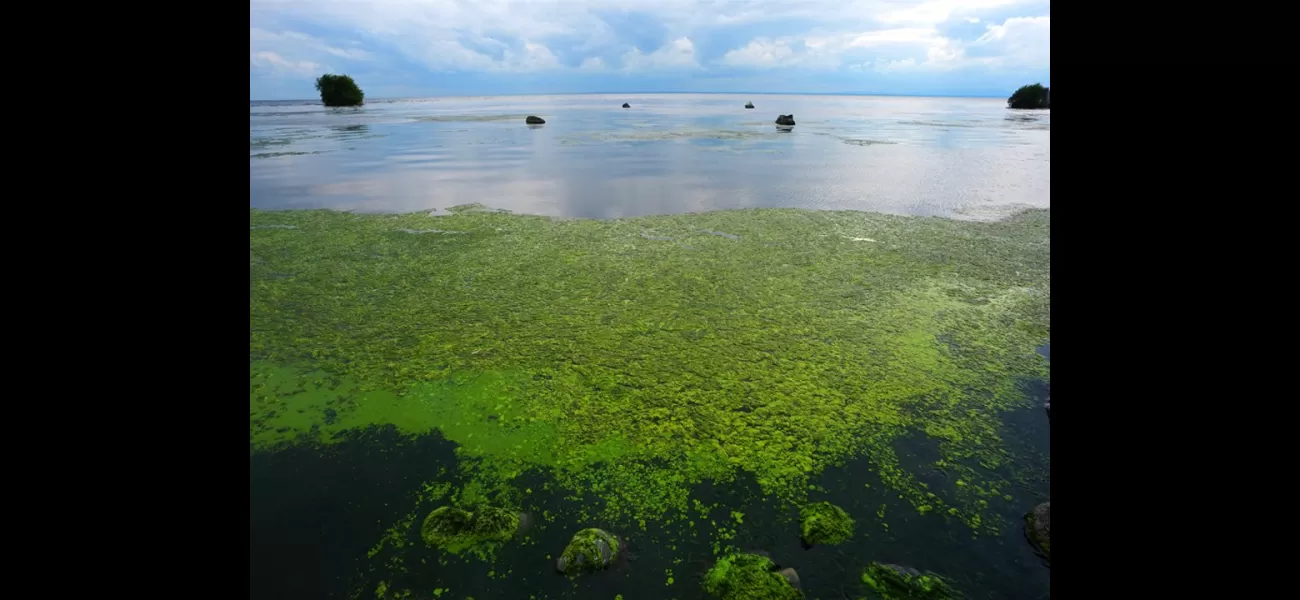Alert issued for deadly algae that poses grave risk to dogs
Tests discovered presence of feces, E. Coli, and Salmonella.
August 6th 2024.

Experts have recently sounded the alarm about a concerning issue affecting lakes and rivers: blue-green algae blooms. These blooms give the water a distinct green color and a musty smell, making it easy to spot. However, what many people may not realize is that these algae can be extremely toxic to pets, particularly dogs.
After conducting tests around the shore of Lough Neagh in Northern Ireland, researchers discovered that the water contained high levels of bacteria commonly associated with feces, such as E.coli and Salmonella. This finding has raised concerns about the safety of the water for pets, as some dogs who entered the lake last summer sadly passed away. Jan Edgginton, who lost her beloved two-year-old Flat-Coated retriever Cove after he came into contact with the algae, shared her heartbreaking experience. Despite her efforts to move Cove away from the water, he tragically passed away within just 45 minutes. Jan described Cove as an unforgettable part of her family, highlighting the devastating speed at which the toxic algae took his life.
The lead author of the study, Dr. Neil Reid from the Institute of Global Food Security, Queen's School of Biological Sciences, expressed his concern about the results. He stated that the high concentration of blue-green algae on the shores of Lough Neagh confirms that the water is in a state of "hypertrophy," indicating severe nutrient pollution. This pollution can be attributed to decades of agricultural, industrial, and domestic runoff. Dr. Reid further explained that their findings support claims of fecal contamination in the lake and its surrounding areas, likely from farm animals and wastewater treatment plants.
The toxins produced by blue-green algae can cause serious health problems in humans, including liver damage and damage to the nervous system. This issue has become a global problem in recent years, driven by factors such as nutrient enrichment, industrial discharge, climate change, and invasive species. The new study, published in the journal Environment International, found that over 80% of the bacterial DNA recovered from algal mats in Lough Neagh belonged to potentially harmful microbes, including E.coli, Salmonella, and others that can cause illnesses in humans.
Dr. Reid emphasized the importance of taking action to restore and protect our environment from harmful bacteria and toxins. He urged for the prioritization of ecological restoration and recovery to prevent the further spread of blue-green algae blooms and their dangerous consequences. As pet owners, it is crucial to be aware of this issue and take precautions to keep our furry friends safe from the toxic algae.
After conducting tests around the shore of Lough Neagh in Northern Ireland, researchers discovered that the water contained high levels of bacteria commonly associated with feces, such as E.coli and Salmonella. This finding has raised concerns about the safety of the water for pets, as some dogs who entered the lake last summer sadly passed away. Jan Edgginton, who lost her beloved two-year-old Flat-Coated retriever Cove after he came into contact with the algae, shared her heartbreaking experience. Despite her efforts to move Cove away from the water, he tragically passed away within just 45 minutes. Jan described Cove as an unforgettable part of her family, highlighting the devastating speed at which the toxic algae took his life.
The lead author of the study, Dr. Neil Reid from the Institute of Global Food Security, Queen's School of Biological Sciences, expressed his concern about the results. He stated that the high concentration of blue-green algae on the shores of Lough Neagh confirms that the water is in a state of "hypertrophy," indicating severe nutrient pollution. This pollution can be attributed to decades of agricultural, industrial, and domestic runoff. Dr. Reid further explained that their findings support claims of fecal contamination in the lake and its surrounding areas, likely from farm animals and wastewater treatment plants.
The toxins produced by blue-green algae can cause serious health problems in humans, including liver damage and damage to the nervous system. This issue has become a global problem in recent years, driven by factors such as nutrient enrichment, industrial discharge, climate change, and invasive species. The new study, published in the journal Environment International, found that over 80% of the bacterial DNA recovered from algal mats in Lough Neagh belonged to potentially harmful microbes, including E.coli, Salmonella, and others that can cause illnesses in humans.
Dr. Reid emphasized the importance of taking action to restore and protect our environment from harmful bacteria and toxins. He urged for the prioritization of ecological restoration and recovery to prevent the further spread of blue-green algae blooms and their dangerous consequences. As pet owners, it is crucial to be aware of this issue and take precautions to keep our furry friends safe from the toxic algae.
[This article has been trending online recently and has been generated with AI. Your feed is customized.]
[Generative AI is experimental.]
0
0
Submit Comment





